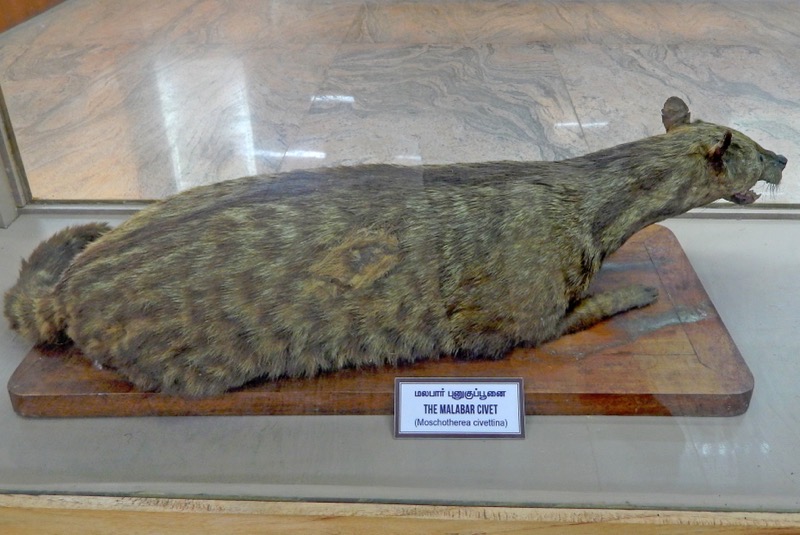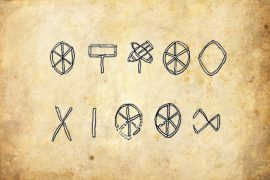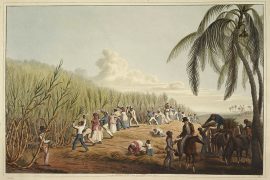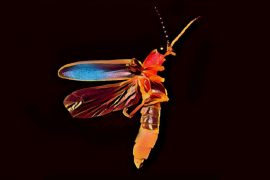On 26 March 2020, a video clip of a civet walking through the deserted streets of a town in Kerala popped up on Twitter. The video went viral online as the uploader identified the animal as the rare Malabar civet, sighted for the first time since the 1990s. Many comments connected the rare sighting to the lockdown, which had reduced outdoor human activity.
However, the claims made by the video are likely to be untrue. The animal in the video is most likely the commonly found small Indian civet, which looks very similar to the Malabar civet. The endangered Malabar civet is one of the rarest animals to sight.
The Malabar Civet, endemic to the Western Ghats of Southern India, is listed as Critically Endangered (possibly extinct) on the IUCN Red List. It is also listed in Schedule I, part I of the Indian Wildlife (Protection) Act and on CITES Appendix III. The population of the Malabar civet has been estimated below 250 mature individuals.
Zoologists have disputed whether the Malabar Civet (Viverra Civettina) is a distinct species or a subspecies of large spotted civets (Viverra Megaspila). The IUCN Red List recognises the mammal as a distinct species.
The Malabar Civet is considered indigenous to southern India’s Western Ghats. All records are missing a specific locality. Even the historical specimens all originated from zoo animals, and there was no information on the source. Zoologists have proposed a distribution in the lowlands ranging from Kanyakumari to Wayanad, Coorg, and Honnavar in Karnataka.
Two accounts have claimed the mammal’s occurrence in the Western Ghats at higher elevations above 600m, in the High Wavy Mountains, and at Kudremukh. The former is likely incorrect, while the latter is based on a single observer sighting that has been unidentified for some years.
The species was considered to be on the verge of extinction by the late 1960s. Until the late 1980s, there were only two potential records, from Kudremukh in Karnataka and Tiruvella in Kerala, both of which lacked objectively verified proof.
A probable recurrence in Karnataka was claimed based on accounts of previous sightings and insubstantial interviews with local hunters. Skins of hunted Malabar Civets were collected in the late 1980s at Elayur, in the lowland Western Ghats, in Malappuram district, Kerala, and near Nilambur, northern Kerala, but they appear to have been lost.
There is controversy over whether the Malabar civet truly belongs to the Western Ghats, let alone a legitimate species. Because the background information on the specimens is restricted, there is little to no information on their ecology or behaviour.
The region where the civet was discovered is home to a significant commercial port, which used to be a hub for the trade of civet extractions. As a result, some speculate that the Malabar civet represents an imported population that may have gone feral or emerged as a hybrid from cross-breeding of the imported civets and Indian civets.
The Malabar large-spotted civet has a dark grey colouration. It bears a black mark on the cheek, two obliquely transverse dark lines on the neck, and a big transverse dark mark on the back and sides. These black markings are more prominent than the common large Indian civet. It has a white throat and neck with a mane between the shoulders. It has black stripes around its tail and dark-coloured feet.
The Malabar civet varies from the large-spotted civet in that the soles of the feet are more exposed. The hair on the interdigital webs between the digital pads creates submarginal patches; the plantar pad’s skin is bare in front and on the sides. The metatarsal pads are visible as two bare patches on the rear foot, the external a bit above the level of the hallux and the internal much higher. A male housed at the Trivandrum Zoological Gardens in the 1930s measured 30 inches (76 cm) in head and body with a 13-inch (33 cm) long tail and weighed 14.5 lb (6.6 kg).
According to the IUCN, since there are no recent trustworthy reports of the Malabar Civet and none are known in captivity, this species is classified as Critically Endangered (Possibly Extinct). Various surveys conducted between 1990 and 2014 in potentially appropriate environments within its stated distribution area yielded no results despite using methods such as camera-trapping that consistently detect similar species when they are present.
Despite these studies, the lack of data suggests that its population, if it exists at all, is likely to number fewer than 250 adult individuals, with no subpopulation larger than 50 individuals. The paucity of recent records suggests a continuous decrease in population size.
Its range and ecology are virtually unknown because no valid records of the species in the wild have ever been found. Only eight specimens taken over a century ago and four more recently, the most recent in 1989, are known for the species.
If habitat use is equivalent to that of the Large-spotted Civet, the Malabar Civet is thought to have experienced a significant decline a century ago due to extensive forest conversion to agriculture. Because the Western Ghats hill range extends close to the ocean for most of its length, the coastal plain forest was never common.
With numerous hydroelectric projects planned in the region over the next decade, natural and semi-natural habitats may be significantly lost. Large-scale deforestation threatens cashew plantations, possibly housing most of this species’ surviving populations.
Civet-musk is claimed to have been widely used in this species’ area between 1965 and 1970. This species may have been employed to harvest civet oil in the past. However, there are no records to back up this assertion. Small Indian Civets are still unlawfully ‘farmed’ and kept in captivity to extract civets, and any remaining Malabar Civets are likely to face the same fate.
Villagers describe civets being killed in retaliation for looting poultry. The most recent skins appear to have originated outside protected areas, suggesting that hunting will remain a menace to this endangered species.
Conservation plan enforcement to protect Malabar civets from extinction is urgently needed. Since there have been no recent sightings, captive breeding is impossible. The IUCN Red List suggests that field surveys should be continued, and threats to the species must be recognised and nullified for their reintroduction.
-30-
Copyright©Madras Courier, All Rights Reserved. You may share using our article tools. Please don't cut articles from madrascourier.com and redistribute by email, post to the web, mobile phone or social media.Please send in your feed back and comments to [email protected]











